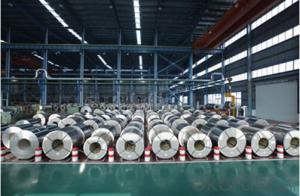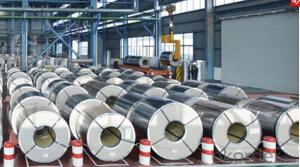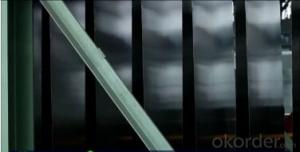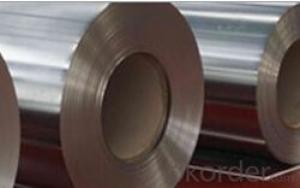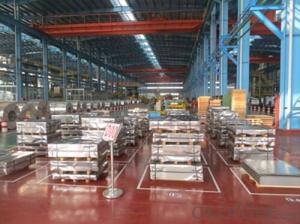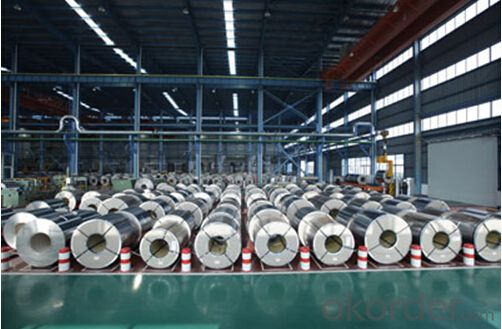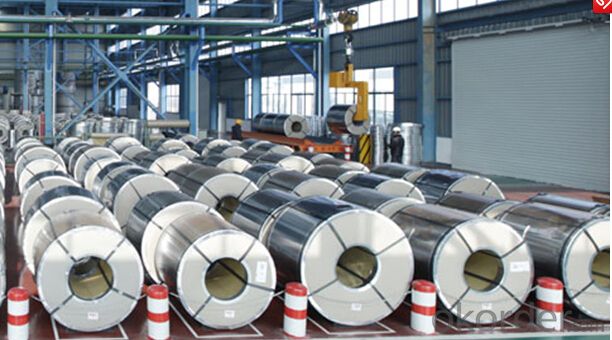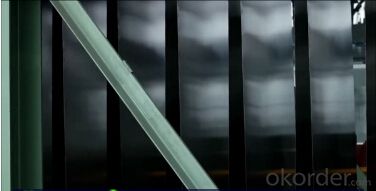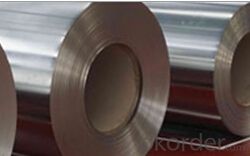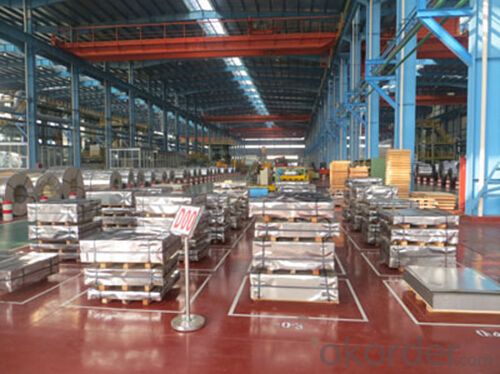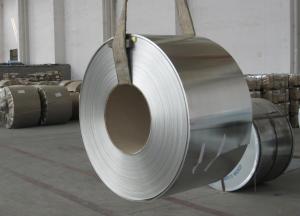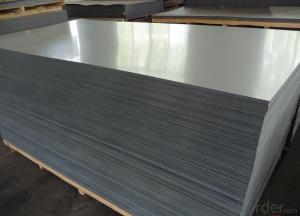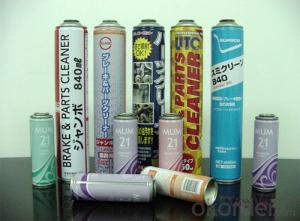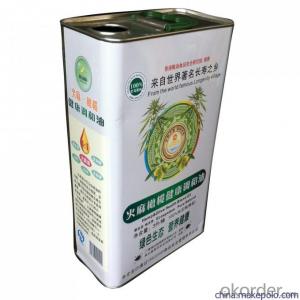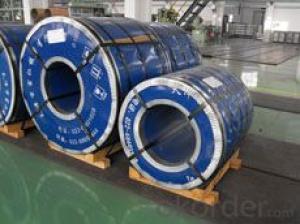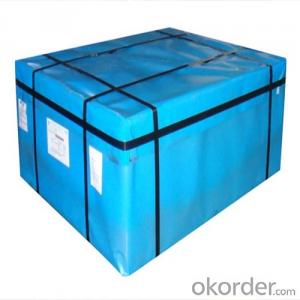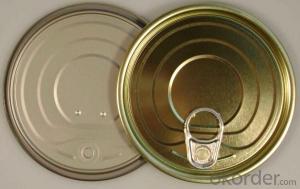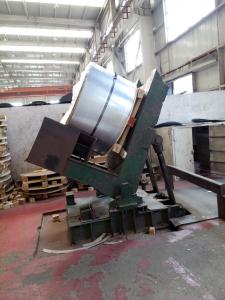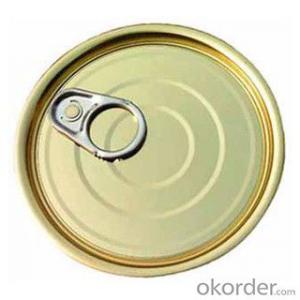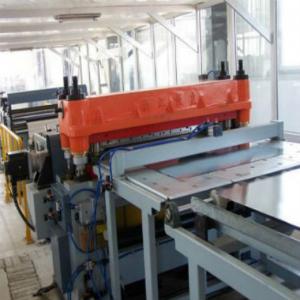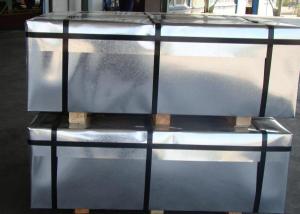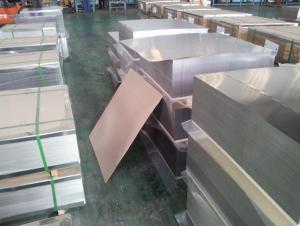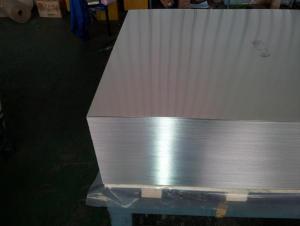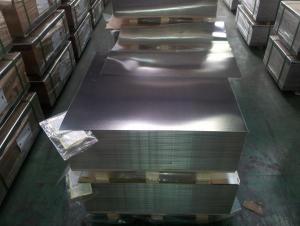Tinplate Coils for American Market with Fine Stone Surface
- Loading Port:
- Shanghai
- Payment Terms:
- TT or LC
- Min Order Qty:
- 50 m.t.
- Supply Capability:
- 1000 m.t./month
OKorder Service Pledge
OKorder Financial Service
You Might Also Like
1.Structure Description
Electrolytic Tinplate Sheets is one of the metal packing materials, which is widely used for making painting cans ,chemical package cans , electrical cable ,battery and metal printing etc.
2. Main Features
Steady and high quality
Fast shipment
Good experience for export work
For the surface, Plate uniform in thickness,uniform and smooth tin coating, without flaws,rusts,scratch,wave,nick of tin coating etc.
Price competitive
3.Images
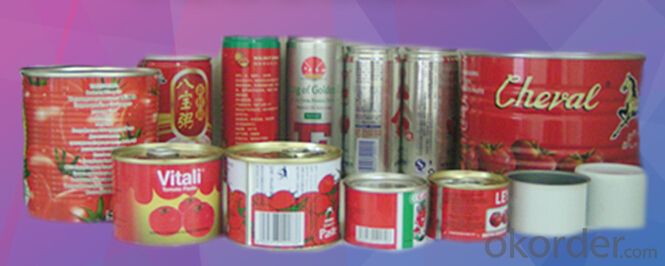
4. Specification
Standard : GB2520-2000 ,JIS G3303
Steel type : SPCC,MR
Coating : 2.8/2.8
Surface: Bright, Stone ,
Thickness:0.18
Width :600MM~1000MM
Temper : T1~T5,DR8
Package: tinplate wrapped completely with an inner cover of plastic or waterproof papers with vorners protected with metal angels.
5.FAQ
A. What is the package of tinplate? (Referred as below)
For sheets, thin plastic film + rust-proof paper + metallic cover + metallic angles+ steel band strips + fumigated wooden pallet.
For coil, thin plastic film + rust proof paper + metallic cover + steel band strips + fumigated wooden pallet
B. The surface of tinplate could you supply?
Stone finish, Bright finish, Matte finish, Silver finish
C: Do you provide high tin coating tinplates?
Yes, we can produce E5.6/5.6, even with 11.2/5.6, high quality.
- Q: What are the main regulations governing tinplate production?
- The main regulations governing tinplate production vary by country and region. However, some key regulations typically include guidelines on the use of materials, such as the type and thickness of tin coatings, as well as regulations on production processes to ensure safety and quality standards are met. These regulations may also cover areas such as labeling, packaging, and transportation requirements to ensure proper handling and traceability of tinplate products.
- Q: Who knows the process of tinplate production?
- 1. remove the oxide scales produced during hot rolling;2. the strip side edge trimming;3. coated with rolling oil, play a role in rust and lubrication;4. check and remove all kinds of surface defects which are harmful to the subsequent cold rolling process;
- Q: Does tinplate require any specific handling or storage conditions?
- Yes, tinplate does require specific handling and storage conditions. It should be stored in a dry and well-ventilated area to prevent corrosion. It is also important to handle tinplate with care to avoid any scratches or dents that may compromise its protective coating.
- Q: What are the different methods of opening tinplate containers?
- There are several methods of opening tinplate containers, including using a can opener, a knife or scissors, a key, or even pulling off the pull-tab lid found on some cans.
- Q: What are the main challenges in tinplate canning process?
- Some of the main challenges in the tinplate canning process include ensuring the proper sterilization of cans to prevent contamination, maintaining consistent quality control to meet regulatory requirements, managing the speed and efficiency of the production line, and addressing issues related to can integrity such as dents or leaks. Additionally, the cost of tinplate material and the environmental impact of its production and disposal are also significant challenges that need to be addressed.
- Q: What is the difference between food grade tinplate and ordinary chemical tinplate? What is the difference between MR material and SPCC?
- No general food grade and ordinary chemical tinplate tinplate. There are some major is not mature in domestic tin (MR, L, D) the production of tinned steel substrate outside, technology is not mature, not environmental protection, so there is a risk for food cans, can only be used for chemical tank.
- Q: How big is the difference between tinplate and stainless steel 316L?
- 316L is a kind of austenitic stainless steel with excellent corrosion resistance. The tinplate is not comparable. 316L is superior to tinplate in appearance, corrosion resistance, heat resistance and strength. Of course, the price is much higher than that of tinplate.
- Q: What are the benefits of using tinplate for coins?
- One of the main benefits of using tinplate for coins is its cost-effectiveness. Tinplate is a relatively inexpensive material compared to other metals used for coin production, such as copper or silver. Additionally, tinplate is highly durable and resistant to corrosion, ensuring that coins made from this material have a longer lifespan. Tinplate is also lightweight, making it convenient for transportation and storage. Lastly, tinplate can be easily coated or decorated, allowing for creative and attractive coin designs.
- Q: How does tinplate packaging contribute to product protection against oxidation?
- Tinplate packaging contributes to product protection against oxidation by providing a barrier between the product and the surrounding environment. Tinplate is made by coating thin sheets of steel with a layer of tin, which acts as a protective barrier against moisture, air, and other external elements that can cause oxidation. This barrier prevents the entry of oxygen, which is necessary for oxidation to occur, thereby extending the shelf life of the product and maintaining its quality and freshness.
- Q: Can tinplate be used for consumer electronics packaging?
- Yes, tinplate can be used for consumer electronics packaging. Tinplate is a type of steel coated with a thin layer of tin, which provides durability, corrosion resistance, and a visually appealing finish. It is commonly used for packaging various consumer goods, including electronics, due to its ability to protect the products from damage and moisture. Additionally, tinplate can be easily shaped into different forms and sizes, making it suitable for packaging various electronic devices.
Send your message to us
Tinplate Coils for American Market with Fine Stone Surface
- Loading Port:
- Shanghai
- Payment Terms:
- TT or LC
- Min Order Qty:
- 50 m.t.
- Supply Capability:
- 1000 m.t./month
OKorder Service Pledge
OKorder Financial Service
Similar products
Hot products
Hot Searches
Related keywords
